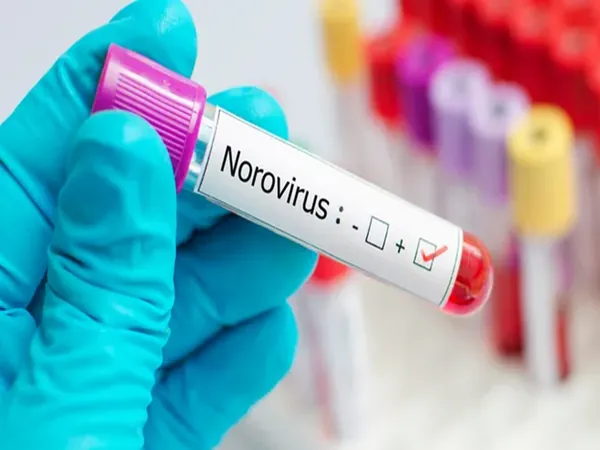
Norovirus Outbreaks on the Rise in the U.S.: Essential Facts You Must Know About the Stomach Flu
2024-12-30
Author: Amelia
What You Should Know About Norovirus:
Understanding Norovirus: Norovirus is the primary culprit behind gastroenteritis, commonly referred to as the stomach flu. The virus leads to severe inflammation of the stomach and intestines, resulting in distressing symptoms.
Symptom Alert: This highly infectious virus can unleash a wave of symptoms almost abruptly, including vomiting, diarrhea, stomach pain, body aches, headache, nausea, and stomach cramps. Additional symptoms may include reduced urination, dark-colored urine, dry mouth, weakness, dizziness, and muscle aches.
Incredible Infectivity: Norovirus can spread like wildfire; just a mere exposure of 10 viral particles can lead to infection. This potency makes it especially concerning in communal settings like schools, nursing homes, and restaurants.
Leading Cause of Foodborne Illness: According to the CDC, Norovirus is responsible for approximately 58% of food-related illnesses in the U.S., highlighting the critical importance of maintaining vigilance in public health practices, especially during outbreaks.
At-Risk Populations: While Norovirus can affect anyone, young children (under 5) and older adults (over 85) are particularly vulnerable to severe complications and may require medical attention more frequently.
Transmission Methods: The virus spreads primarily through direct contact with an infected individual’s stool or vomit. It can also contaminate food, drinks, and surfaces, often due to inadequate hand hygiene practices following bathroom use.
Infection Sources: Individuals can contract Norovirus by consuming contaminated food or beverages, touching contaminated surfaces, or through close contact with an infected individual. Raw shellfish from polluted water can also be a source of infection.
Onset and Duration of Illness: Symptoms typically manifest within 12 to 48 hours post-exposure, with the illness lasting between one to three days. Despite its short duration, the experience can be debilitating.
Convalescent Care: If infected, it is crucial for individuals to maintain hydration. The CDC recommends drinking plenty of fluids, with options like sports drinks and oral rehydration solutions being beneficial, although antibiotics are ineffective against the virus.
Prevention is Key: To minimize the spread of Norovirus, here are some vital tips: - Remain at home for at least two days after symptoms cease. - Wash hands frequently for at least 20 seconds. - Disinfect contaminated surfaces thoroughly. - Handle and cleanse all food items, especially fruits and vegetables, meticulously.
A Closing Note on Vigilance
During this winter season, as Norovirus cases rise, it's essential to be aware and proactive. Simple steps like proper handwashing and staying home when symptomatic can significantly curb the spread of this illness. Stay informed, and let's work together to keep our communities healthy!
Don't Miss Out! Keep an eye on emerging health advisories as they can affect you and your loved ones. Stay safe and healthy this winter!









 Brasil (PT)
Brasil (PT)
 Canada (EN)
Canada (EN)
 Chile (ES)
Chile (ES)
 Česko (CS)
Česko (CS)
 대한민국 (KO)
대한민국 (KO)
 España (ES)
España (ES)
 France (FR)
France (FR)
 Hong Kong (EN)
Hong Kong (EN)
 Italia (IT)
Italia (IT)
 日本 (JA)
日本 (JA)
 Magyarország (HU)
Magyarország (HU)
 Norge (NO)
Norge (NO)
 Polska (PL)
Polska (PL)
 Schweiz (DE)
Schweiz (DE)
 Singapore (EN)
Singapore (EN)
 Sverige (SV)
Sverige (SV)
 Suomi (FI)
Suomi (FI)
 Türkiye (TR)
Türkiye (TR)
 الإمارات العربية المتحدة (AR)
الإمارات العربية المتحدة (AR)